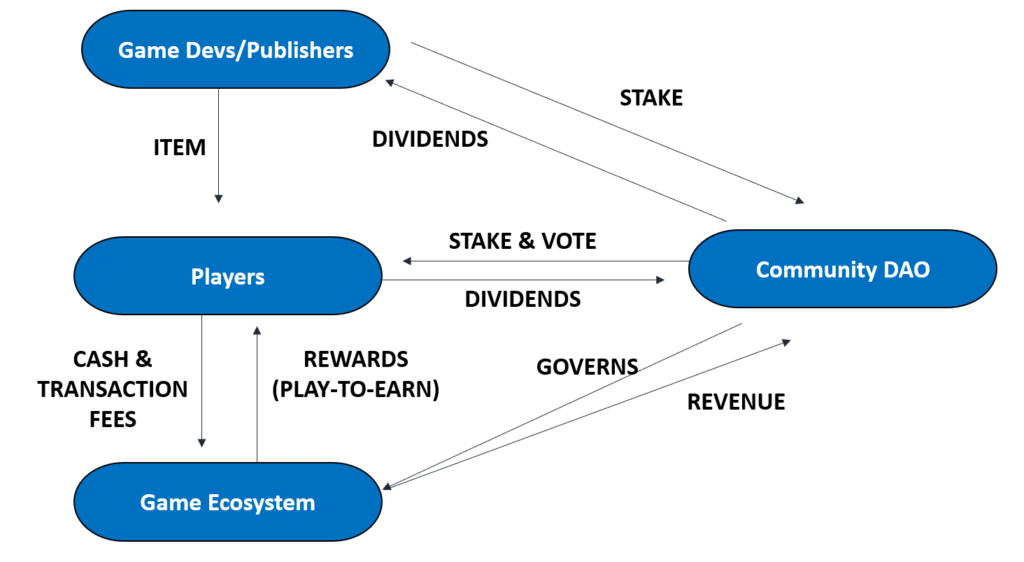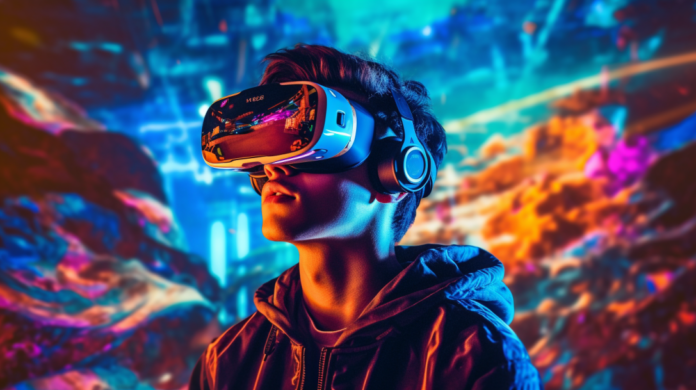Imagine a world where gaming meets intelligence, where your digital assets are more than mere pixels on a screen, and where the boundaries of interactivity and ownership are constantly being redefined. This is not a far-off dream; it’s the blossoming reality of Web 3.0 gaming.
Web 3.0, the next evolution of the internet, is reshaping our digital landscape. This ‘Semantic Web’ is all about machine readability, enabling a richer, more personalized user-machine interaction. One domain where Web 3.0 is unlocking unprecedented possibilities is game development. In this sphere, it’s fostering a more immersive, interactive, and inclusive gaming ecosystem.
A cornerstone of this evolution is blockchain technology, a decentralized solution that addresses various gaming challenges. It offers efficient payment systems, improved fair play models, and layered security, fundamentally altering the way we perceive gaming. But how, you ask? The answer lies in three magic letters – NFTs.
Non-fungible tokens (NFTs) are unique digital assets that you can trade on secondary markets without middleman intervention. NFTs have ignited a revolution in the gaming industry, giving gamers complete ownership of digital assets and providing a secure platform for decentralized tournaments.
These tokens have started to decouple gaming from centralized authorities. With the rise of Web 3.0 games powered by NFTs and the Metaverse, the once-unchallenged dominance of centralized game makers is waning. Blockchain networks like Ethereum, Polygon, and Solana are hosting more games than ever, allowing gamers to bypass intermediaries and dive straight into immersive experiences. The cherry on top? NFTs also offer a chance to earn income from in-game items, setting the stage for a new era of ‘play-to-earn’ gaming.
The integration of smart contracts – programs running on blockchain – within Web 3.0 gaming has further enhanced the viability of NFTs. These contracts underpin NFT conditions, allowing transactions to occur when predetermined conditions are met. Games such as The Sandbox exemplify this model, where creators can earn royalties every time their playable NFTs are resold.
One of the most transformative shifts with Web 3.0 gaming is interoperability, the ability to use assets from one game in another. This feature is a game-changer, quite literally. It enhances user engagement and optimizes the earning potential from digital assets, opening up a multiverse of gaming experiences.

The underpinning technology, blockchain, is pivotal to this seismic shift. Its open, permissionless structure provides gamers with more control within the Web 3.0 gaming ecosystem. It also enables digital scarcity, ensuring that gamers retain ownership of their assets even after sales, thus safeguarding players’ financial and time commitments.
Web 3.0 gaming is more than just decentralizing game development and play. It’s about empowering players with more control and ownership of in-game assets and economies. The security and immutability provided by blockchain technology only add to the appeal of Web 3.0 gaming, promising a future where gamers have more at stake and more to gain.
To close out here, Web 3.0 is not only changing how we play games; it’s redefining what it means to be a gamer. It’s the dawn of a new age where gaming is immersive, interactive, and incredibly rewarding. So buckle up and get ready to dive headfirst into the exciting world of Web 3.0 gaming, where your digital assets are as real as they can get, and the gaming arena is truly your oyster.
As we ride the wave of this digital revolution, it’s important to stay informed, stay secure, and above all, stay engaged. After all, the future of gaming is a collaborative effort, and we’re all a part of it. So, game on!
